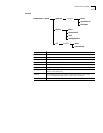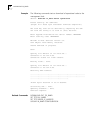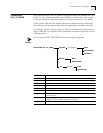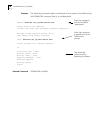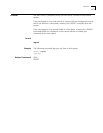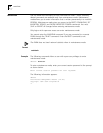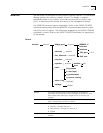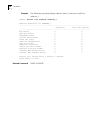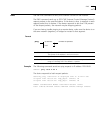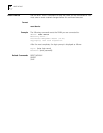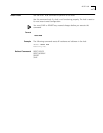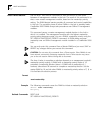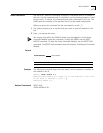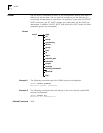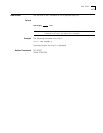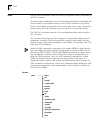
PING
2-43
PING
Use the PING command to verify that a device is active on the network.
The PING command sends up to 255 ICMP (Internet Control Message Protocol)
request packets to the specified device. If the device is alive, it responds to each
request packet that it receives. If the device responds to less than 100 percent
of the request packets, the network may be dropping packets.
If you are having trouble pinging to a remote device, make sure the device is on
the same network (segment), or bridged or routed to that segment.
Format
Example
The following command sends two ping requests to IP address 133.8.9.60:
CB5000> ping 133.8.9.60 2
The device responds to both request packets:
Starting ping, resolution of displayed time is 10 milli-sec
64 bytes from 133.8.9.60: icmp_seq=0. time=10. ms
64 bytes from 133.8.9.60: icmp_seq=1. time=20. ms
Number transmitted=2 Number received=2 Percent loss=0
Total time=30 Minimum time=10 Maximum time=20 Average time=20
ip address Specifies the IP (Internet Protocol) address of the device to be tested.
The format of the address is nnn.nnn.nnn.nnn.
host Specifies the name of the host to be tested.
number of packets Number of request packets to send. You can use any number in the
range of 1 through 255. The default is 1 packet.
ping
ip address number of packets
host



